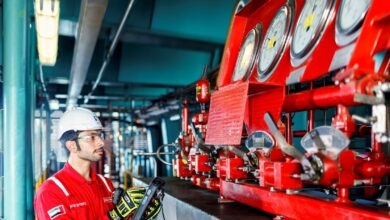National Oil Companies Must Look Towards New Operating Model for a Decarbonized Future

National Oil Companies (NOCs) need to rethink their operating model and clearly link it with their strategic objectives to deliver the expected future production, cost, and greenhouse gas reduction impacts. The new BCG report entitled ‘The Future Operating Model for National Oil Companies”, observed a clear value of implementing lean operating models, as they can deliver 30-40% efficiency gains across the whole O&G upstream value chain. This includes levers such as applying deeper resolution reservoir models and linking them with production optimization that can result in a 4-6% increase in well production and 80% shorter cycle time in early design and evaluation.

“Like any transformation effort, implementing a new operating model requires a detailed roadmap, a defined team with clear accountabilities, active change management, risk assessments, and supporting IT systems,” said Bjorn Ewers, Managing Director and Senior Partner, BCG. “For NOCs, an integrated transition approach should focus on various critical levers, including activities and processes, new ways of working, digital and technology, and decarbonization.”
Additional levers include applying Artificial Intelligence (AI)/Machine Learning (ML) models and digital twins to predict non-productive-time events and optimize oil recovery can result in a 2-6% production increase and ~25% reduction in drilling & completions CAPEX. Utilizing predictive maintenance and management by exception to increase uptime can lower maintenance expenses by 15-25%.

“The transition to low-carbon energy sources is fundamentally reshaping how energy is produced and consumed, and Middle Eastern NOCs have remained ahead of this evolutionary trend to date – broadening operational scopes to include alternative energy areas, approving decarbonization investments, to low-carbon liquefied natural gas (LNG),” commented Szabolcs Mihalik, Partner & Associate Director, BCG. “Hosting COP27 in Egypt and COP28 in the UAE in 2022 and 2023 will place NOCs in Africa and the Middle East in critical positions to review the challenges of climate change.”
International Oil Companies (IOCs) have already started to transform their operations. After decades of maintaining a long upward trajectory, O&G companies’ total shareholder return (TSR) has underperformed the S&P for the past 3-, 5- and 10-year investment periods with little relief in sight. IOCs have realized that current upstream operating models are not sustainable; oil price volatility, oversupply, and energy transition are forcing them to evolve. Individual portfolio strategies may differ, but it has become clear that success in any future model requires radically new ways of working. To a similar extent, NOCs are also in the same position as IOCs, and a transformational change is a requirement.
Transforming an O&G company’s operating model is a 3-step journey:
1. Transform the way to operate
This starts with redefining its operating philosophy – a term encompassing its vision, mission statement, principles, aims, and key business practices. NOCs will need to build cost and carbon considerations into all aspects of their operating philosophies. This may include embracing the lean approach to continuous improvement – optimizing operations, eliminating waste, and increasing customer value. It may be anchored around key operational shifts, like commitment to unmanned operations.
2. Streamline core processes and rationalize activities
This begins with simplifying core production, maintenance, and safety processes. This simplification removes unnecessary steps and eliminates unwanted redundancies, making full use of newly available technologies and information. It includes reducing the volume of activities such as routine checks. At this stage, companies should optimize their ratio of corrective to preventative maintenance, and preventive maintenance planning and frequency. This is also the time to revisit and rationalize the integrated operational planning process, correcting gaps and cutting non-value-added work.
3. Develop a digitally enabled holistic operating model for the future

Digitalization – including big data and predictive analytics, robotics, Artificial Intelligence (AI), Machine Learning (ML), and the Internet of Things (IoT) – has the power to strengthen and enable every aspect of O&G companies’ operations. The third step in the transformation journey is to develop a digitally enabled and holistic operating model for the future. This means building advanced capabilities and fully leveraging the range of digital tools. Companies must be able to move at pace from localized pilots to integrated large-scale implementation delivering maximum impact.
“Innovative ventures are rapidly unfolding in the sector, equipping NOCs—along with the countries that depend on their revenues—with long-term capabilities to facilitate green solutions,” said Jean-Christophe Bernardini, Partner & Associate Director, BCG. “NOCs are thus providing important elements of stability for economies during this process, especially if streamlining innovative processes within their future operations.”



